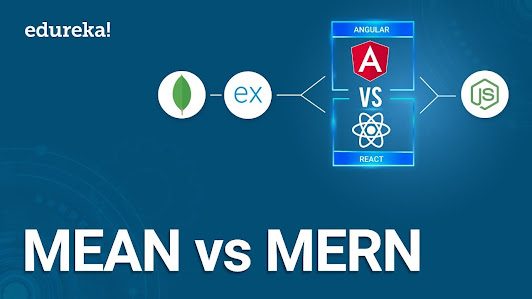Everything You Need to Know about the MERN Stack
MERN Stack is quite a popular and
influential stack to work in. Considering a MERN
stack bootcamps can help build and deploy
good MERN application and prompt a bright career as a developer.
What is MERN stack?
A stack is a combination of technologies
used to create a web application. Any web application makes use of multiple
technologies like frameworks, libraries, databases etc.
MERN stack is a JavaScript stack which is
designed to make your development process smoother. MERN includes four
open-source components: MongoDB, Express, React and Node.js. These components
offer an end-to-end framework for developers to operate.
The four MERN stack components include:
MongoDB: It is a cross-platform document
database. Further, MongoDB is a non-relational document-oriented database and
is schema-less. Data in it is stored in flexible documents with Javascript
object-based query language. The content, size, and number of fields in the
documents can differ from one to the next. This implies that data structure can
be modified over time. It is known for its flexible and easy-to-scale
applications.
Express: Is a back-end web application
server for Node.js. Rather than writing complete webserver code by hand on
Node.js directly, developers use express to ease the task of writing server
code. There is no need to replicate the same code repeatedly, as one would in
Node.js HTTP module. Hence, MERN stack training can be a viable route for
developers. The express framework is created for building sturdy web
applications and APIs. It offers fast speed and minimalist structure with
several other features as plugins.
React: Is a Javascript for building
interfaces and was created by software engineers at Facebook. Later, it was made
to be open-sourced. It is currently maintained by Facebook as well as other
communities of development companies and individual developers. Additionally,
the React library can be used for creating views rendered in HTML. Its views
are declarative, which implies that you don’t need to worry about managing the
effects of changes in the view state or changes in the data as a developer.
Other than this React uses full-features programming language for constructing
repetitive or conditional DOM elements. With it, the same code can be run or
bother the server and browser. React is the defining feature of the stack and
the component helps in differentiating MERN from MEAN.
Node.js: Node.js is a cross-platform
JavaScript runtime environment. It was initially built for Google Chrome and
later open-sourced in 2008. It is developed to build scalable network
applications and can perform JavaScript code external of a browser. It works
without an enclosing HTML page, instead of using its own module system based on
CommonJS to put together several JavaScript files.
Advantages of the MERN stack
The main benefit for developers using
the MERN stack is that every line of code is written in JavaScript. It is a
programming language used everywhere both for client-side and server-side code.
With one language across tiers, there is no need for context switching. For
tech stack with multiple programming languages, developers have to figure out
how to interface together. With JavaScript stack, developers only need to be
proficient in JavaScript and JSON. All together, using the MERN stack enables
developers to build highly competent web applications.
Consider MERN Stack Training Online
A comprehensive MERN Stack Bootcamp will help you build your dynamic web applications. MEAN Stack Training by SynergisticIT covers all the MERN stack components- JavaScript, MongoDB, Express, React and Node.js. Opting for the best MERN Stack Training you would learn in-demand languages like HTML, CSS, Python and Django. Consider this online learning curriculum for a skill enhancement for a great start to a fulfilling career.
Also, Read This Blog: How does the MERN stack work?



Comments
Post a Comment